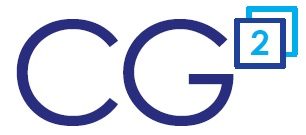I’ve been working on setting up trade promotion KPIs on dashboards. I marvel at how easy it is today to get real-time visibility to trade promotion metrics than it was years ago.
With all of the new technology, I find it interesting that the basics of trade promotion KPIs have not changed for the past 30 years. There are many more KPIs for incremental analysis, which require baselines. There are additional data sources that can improve the accuracy of volume estimates, and mathematical modeling that can improve estimated promotion lift. However, in my opinion, these seven promotional KPIs below remain the foundation for basic trade promotion analysis:
| KPI | What is this KPI? | Description of the trade promotion key performance indicator. |
| Estimated Trade Spend | What you think will happen. | Promotion planning starts with creating a future promotion with an estimated volume and trade spend. This KPI is used by the approver to approve or reject the promotion. Estimated Trade Spend is a forecast of the total cost and financial impact of your promotions based on your allowances and estimated quantities. |
| Latest Estimate of trade spend (LE) | What is most likely to happen. | LE is the current forecast of the total cost of the trade event using data that wasn’t available when the promotion was created or approved. Use LE as a real-time forecast into what the promotion will do as it moves through its lifecycle: Future, Active, Completed, and finally Closed. |
| Maximum Liability | This is the maximum the deal should cost. | Sometimes not every case sold or forecasted will be eligible for the trade promotion discounts. If you anticipate redemption is less than 100%, Expected Liability will be less than Maximum. Maximum calculates your liability assuming 100% of all qualifying sales are eligible for your allowances. Some companies use this to understand their maximum financial liability. |
| Expected Liability | The total deal cost so far, including paid and unpaid amounts. | Expected liability takes into account a redemption factor when not all volume during the promotion is eligible for trade allowances. This is a better measure to use when evaluating payments and promotional claims. Any payment in excess of what you owe is an over payment and should not reduce your promotional Net Liability. |
| Actual Trade Spend | What has been paid or resolved to date. | This shows what has officially been recorded as of today. Your ERP and TPM solution keep track of what you sell, ship, and in addition to promotional settlements by event. |
| Net Liability | What you owe but haven’t paid. | Net Liability is an important trade promotion measure that is typically not available unless you have a true TPM (trade promotion management) solution. Use this KPI to anticipate future promotional payments and deductions. ERPs and TPM solutions can use this information to anticipate future promotional claims and create event-based accruals. |
| Overpay | What you paid above what you owed | Use this measure to identify promotions where the amount claimed or deducted was greater than the calculated amount you owed. The overpay KPI is used to more accurately calculate Net Liability. |
These are the basic KPIs. Without these metrics, many other promotion KPIs are not possible. For example, ROI and cost-per-incremental case can’t be calculated without knowing actual and LE spending for each promotion. You can’t evaluate how well you did with planning your trade promotion events without capturing the estimated trade spend by event.
From these basic KPIs, hundreds of additional KPIs can be created. Take any one of these measures and divide by cases or consumer units to get rate-per-unit metrics. You can compare these to revenue to create spending-as-a-percent of sales. If your stakeholders are empowered to see profitability, use these KPIs to incorporate historical, proforma and actual profitability.
None of these advanced trade promotion analytics are possible without first working on the basics. For more KPI insights, check out our other blog at https://i-tpm.com/blog/.
Thank yo for reading our blog.
Alex Ring, Co-Founder CG Squared, Inc.
